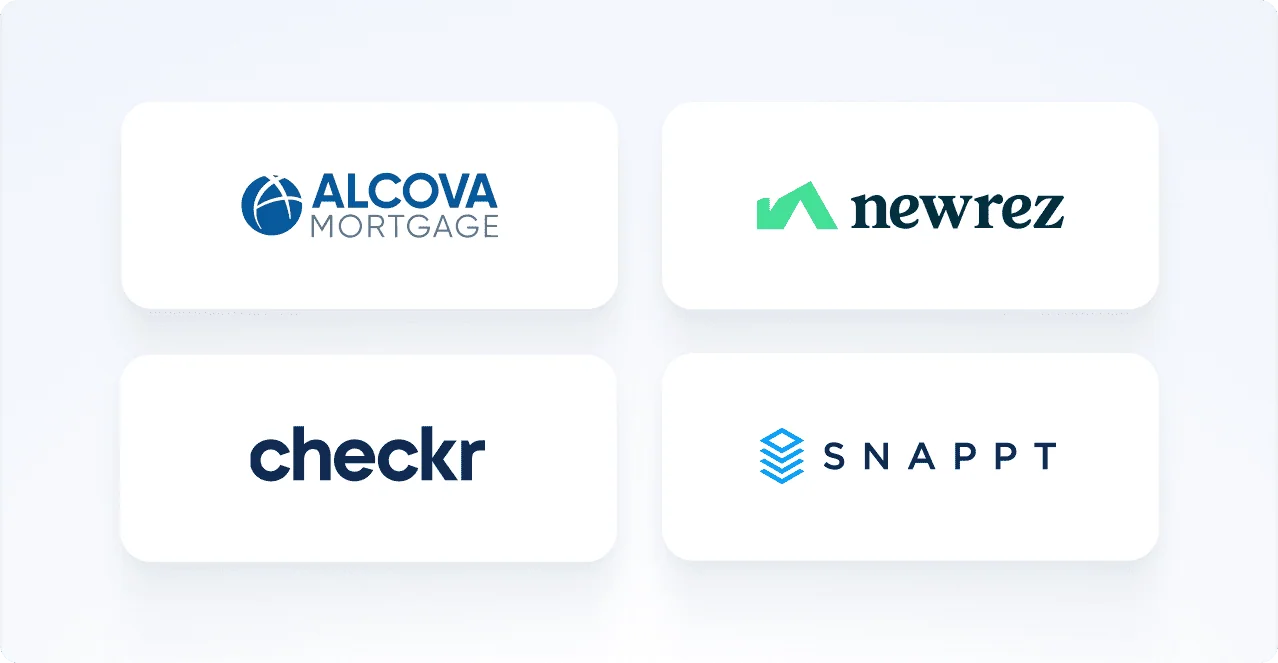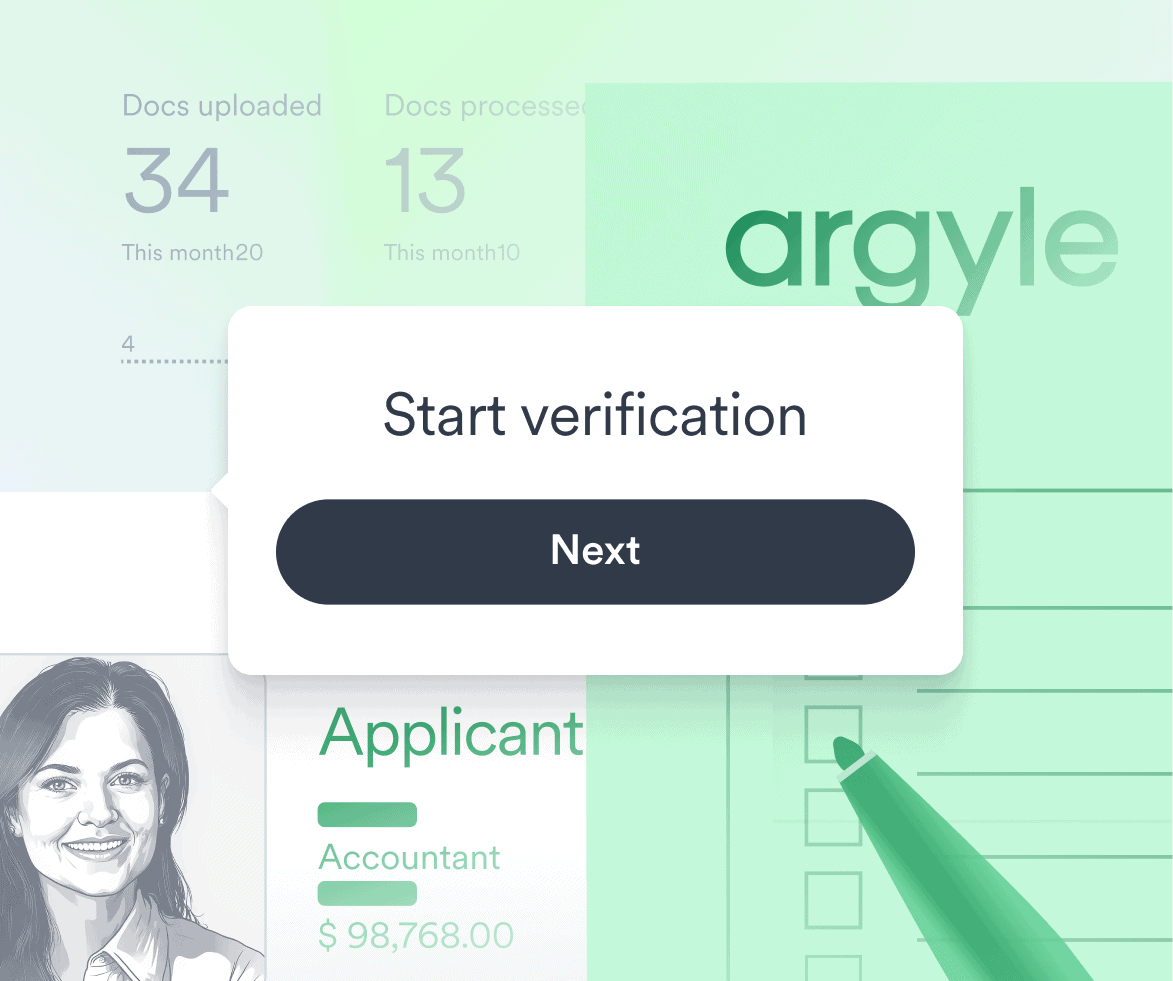Read the full webinar recap here or register to watch on-demand.
Below, you can browse the audience questions submitted at the end of the webinar, including those our panelists weren’t able to address during the live session. Read our answers by clicking into each of the questions in the drop-down list.
As a reminder, If you have questions about Argyle’s platform specifically, including our coverage and individual solutions, you can visit our lending industry page for more information.
Q: If you could have access to any one piece of data, consumer-permissioned or not, to underwrite a credit-invisible or thin-file consumer, what would it be?
A: Our panelists agree that, in an ideal world, cash flow is the perfect goldmine of data. It combines two independent data sources (income and expenses) and demonstrates how a consumer manages their finances in practice. This can help underwrite invisible or thin-file consumers who may be new to credit or opting out of traditional credit channels.
However, between real-time income and expense data, the former has a slight edge. When paired with a general view of debt from credit bureaus, it can be used to predict future earnings and weigh them against a consumer’s financial obligations.
Q: How do you put these new, alternative data sources into production?
A: Implementation varies significantly between consumer-permissioned and non-permissioned sources, in terms of operations, user experience, and data quality.
With non-permissioned data flows like a credit bureau call, there is very little friction for the consumer and the lender—but the value of the data itself can be limited. It’s often outdated, and it’s based on information that’s been contributed by other lenders, rather than a primary source.
On the other hand, permissioned data flows are easy to integrate through APIs and other embeddable tools, add little to no friction, and provide superior data. But there are a few extra questions when it comes to production—for example, where in the waterfall will they yield the highest conversion rates, how stable is the connection, where will data be stored, what data attributes will be used and for which underwriting decisions, and so on.
Q: Can a credit decision (and specifically, a credit decline) be made using alternative, consumer-permissioned data?
A: To give everyone’s favorite answer, yes and no.
You cannot use data that’s not covered under the fair credit reporting act (FCRA) to make a credit decision. But you can absolutely use it as part of your underwriting process during the verification stage or to add nuance to your internal credit rules.
For example, you cannot decline a consumer just because they hold a risky job in a risky industry. But you can adjust the score you’re willing to give them in your underwriting algorithm, so they need to meet higher requirements in other categories to qualify.
Or, let’s say a consumer claims they make $10,000 a month, and you pre-approve them accordingly for a loan. If you verify their income using Argyle and discover they only make $2,000 a month, you are well within your rights to deny them your services at that verification stage, using that income data.
Q: How do you incentivize consumers to share their financial data?
A consumer’s willingness to share their financial data is often dependent on when and how this information is requested during the underwriting process.
For instance, a consumer who has not yet received a credit determination or been extended a loan offer is unlikely to go to the trouble of entering their account credentials to verify their income and employment. On the other hand, a consumer who has already been pre-approved is much more motivated to follow through. Thus, positioning a verification flow strategically is one of the most effective ways to ensure conversion.
It’s also important to partner with vendors that offer broad coverage and that support as many login technologies as possible. They need to be able to handle single sign-on, multi-factor authentication, password reset flows, and so on, so users are never required to leave an application session before they’ve submitted their information.
Q: How do you deal with the friction and drop-offs that come with obtaining consumer-permissioned data?
A: It’s worth noting that the steps Argyle introduces—verifying income and employment—are not added steps. They have always been a critical part of the underwriting process.
If anything, Argyle removes friction from the equation. Rather than searching for and scanning paper paystubs or uploading PDFs, consumers can input their payroll credentials and have this data automatically provided for them. That’s why Argyle sees significantly more users complete the verification process, when compared to legacy manual methods.
Q: Do solutions like Argyle’s really reduce credit risk, since a consumer can change their direct pay setup post-origination?
A: Verifying income and employment directly through primary source data absolutely reduces credit risk. Over the past few years, it has become easier and easier for malicious actors to generate fake bank statements and paystubs, which allow them to bypass fraud filters and apply for loans en masse.
Studies have shown that consumer-permissioned, data-enabled solutions offer a more efficient, inclusive, and cost-effective way to close credit gaps among low-income and thin-file consumers.
We’ve also seen the results first-hand, with Argyle partners like BMG Money experiencing lower delinquency rates.
Q: How do services like Argyle help smaller businesses that may not have the same level of tech adoption or familiarity?
A: From the consumer perspective, it all comes down to coverage. Whether an employee works for a Fortune 500 company or a neighborhood bakery, they’re paid through a payroll platform, and that platform is likely counted among the 450+ payroll and gig platforms covered by Argyle’s data network. We also support document uploads for users who want to scan or send their materials manually.
From the lender perspective, Argyle offers a solution for every level of technical knowhow. Financial institutions can integrate with Argyle’s API through their own app or website, or they can connect consumers through our no-code solution, Argyle Console. Either way, they get access to our powerful payroll connections and real-time income and employment data.
Q: How do you think underwriting models will shift for fintechs and other lenders as more professionals embrace the gig economy and diversify their sources of income?
A: There’s been a strong upward trend in the number of workers participating in the gig economy, with recent studies estimating that 36% of the U.S. labor force identify as independent workers.
While there’s no silver bullet for effectively underwriting these workers, the key is to no longer rely on a single data source and instead offer a 360-degree view of financial health and risk. That means connecting all of their income sources, gaining visibility into their cash flow through banking and bill-pay data, and combining these points with any available credit data to gauge how they’ve taken on and managed debt in the past.
Tools that allow financial services to build this more holistic picture already exist. Now it’s time, as an industry, to find the most efficient way to stitch them all together.
There are plenty of fintechs that are already lending to this unique audience and leveraging the power of real-time income and employment data to expand their product offerings while minimizing risk. Fintechs like Karat are even connecting to the content platforms creator customers use (like YouTube) and using levels of viewer engagement to measure success and supplement their underwriting models.
Q: You’ve addressed income, but not debt. How do you measure debt for credit-invisible consumers? Would it need to be self-reported?
Credit-invisible consumers have less than five accounts on file across the three major credit bureaus. By definition, they do not have a substantial record of debt, at least officially within the United States.
What consumer-permissioned data allows you to do is to frame and interpret debt management in other ways. For instance, you can consider a consumer’s cash flow using banking data to assess how they manage day-to-day expenses and whether they’ve built up alternative credit records through programs like buy-now-pay-later.
Q: Do you consider bill payment history (whether consumer-permissioned or not) a useful indicator of creditworthiness?
A: Bill payments toward utilities, mobile plans, and other services are absolutely useful.
On the one hand, these records demonstrate how a consumer meets basic financial obligations, and whether they do so on time and in full. On the other hand, they contribute to the larger picture of a consumer’s cash flow, helping underwriters understand how much of their income would remain, after existing expenses, to repay a new loan.
Q: How do rent payment verifications fit in? Does it make sense to ask for a 12-month verification?
A: In our opinion, rent payments are a strong indicator of a borrower’s ability to manage cash flow—particularly when it comes to thin-file or credit-invisible consumers.
That’s because rent is typically their largest monthly liability, often involving between 25% and 50% of a consumer’s total household income. That makes it a good litmus test for whether or not they can repay their financial obligations.
In terms of the scope of rent verifications, of course more data is always better. That said, we would prioritize recent transactions (those from the last three to six months or so) over older records. FICO is similar in the way it weighs recently missed payments more heavily. It stands to reason that you are underwriting a consumer as they are today—not as they were years ago.
Q: How do you deal with low coverage, especially for the subprime sector?
A: One of the main benefits of alternative data (over data from a credit reporting agency or other non-permissioned source) is that it tends to be credit-agnostic. All that matters for income and employment data is that a consumer is working or has worked. For banking data, that they have a bank account. For utilities data, that they use a cell phone or other billed service. That means that coverage limitations are largely eliminated.
For instance, Argyle’s data network covers 85% of the U.S. workforce, and that coverage is distributed evenly across the credit spectrum. This sets it apart from major credit bureaus, whose datasets tend to be concentrated around prime and super-prime consumers.
Q: How would you change your underwriting metrics for high-risk (low- or no-score) consumers applying for microloans?
A: Whether a consumer is high-risk due to a low FICO score or credit invisible, relying on traditional credit reports alone is insufficient.
To get a holistic, 360-degree sense of their financial health, you need to consider alternative data that paints a complete picture of their cash flow. That includes their transaction data, income and employment history, and rent or utility bill payments, which can serve as a sort of proxy for their ability to repay debt. Combining all of those sources can help you understand how they manage their finances from month to month.
Learn more about Argyle’s direct, real-time payroll connections
Get in touch with a member of our team to discover what our Income & Employment Verification solution can do for your business.








